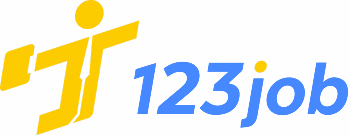Câu 1:
There are the key components of logistics except for....
- Production plan
- Procurement
- Market diversification
- Inventory management
Câu 2:
Holding high levels of inventory result in______ inventory carrying costs and ________stockout costs.
- high 3 low.
- low 3 low
- low 3 high
- high - high
Câu 3:
EOQ model is that order quantity which result in .................total inventory cost.
- maximum
- minimum
- carrying
- average
Câu 4:
Safety stock is also referred to as cycle stock.
Câu 5:
The higher the average cost of a stockout, the more likely a company is going to want to hold safety stock.
Câu 6:
__________ products refer to those that customers view as being able to fill the same need or want as another product.
- Substitute
- Me-too
- Copycat
- Co-branded
Câu 7:
What is a perfect order ?
- simultaneous achievement of relevant customer metrics
- an order that arrives on time
- an order that arrives undamaged
- an order that is easy for the receiver to fill
Câu 8:
Which of the following is not a reason for the increased importance of logistics?
- Growing power of manufactures
- Logistics is a subset of supply chain
- All of the above
Câu 9:
Which of the following is not a characteristic of transportation by rail ?
- inflexibility as routes and timings are predetermined
- slower in comparison to shipping by air or truck
- lower cost in comparison to shipping by truck
- potential for product damage
Câu 10:
This is the type of warehouse that most businesses, especially small- and medium-sized companies, choose to store their goods because they cannot afford to have their own warehouse due to financial constraints.
- Public warehouse
- Private warehouse
- Customs warehouse
- Refrigerated warehouse
Câu 11:
What of the following is NOT the advantage of rail freight ?
- High degree of flexibility
- Capable of hauling large loads
- Burn less fuel per ton-mile than trucks
Câu 12:
To reduce inventory management costs, many companies use a system called........,which involves carrying only small inventories of parts or merchandise, often only enough for a few days of operation.
- Reduction-inventory Management
- Supply Chain Management
- Economic Order Quantity
- Just-in-time Logistics
Câu 13:
*They are a significant portion of a firm's total supply chain expenses
- They represent more than 80% of total logistics costs
- They are not reflected in a company's financial statements
- They discourage a firm from outsourcing
Câu 14:
Which of the following functions is not included in the seaway bill?
- Confirm an insurance policy
- Claims ownership for goods
- Confirm the receipt of goods on board
- Confirm a contract of carriage
Câu 15:
MRO inventory refers to the equipment, tools and activities associated with the daily operations of a business. It doesn't include materials, products and services that are directly used in production, but rather the glue that holds everything together. MRO stands for____________
- Maintenance, repair, operating supplies
- Maintenance, repair, optimization
- Maintenance, renew, operating supplies
- Maintenance, renew, optimization
Câu 16:
Re-order level depends upon two factors, lead time and........
- Inventory
- Warehousing
- Procurement
- Safety stock
Câu 17:
Four economic utilities that play a role in logistics management are possession, time, place and.......
- inventory
- damage control
- cost
- form
Câu 18:
Which of the following sequence is true?
- Sourcing Inbound logistics Conversion into finished goods Outbound logistics-Retailing
- Sourcing Inbound logistics – Outbound logistics -Conversion into finished goods→Retailing
- Sourcing Conversion into finished goods Inbound logistics Outbound logistics-Retailing
- Sourcing Outbound logistics -Conversion into finished goods -Inbound logistics –Retailing
- Inbound logistics Sourcing Conversion into finished goods Outbound logistics → Retailing
Câu 19:
The ABC analysis of inventory control is based on...
- Usage value
- inventory movement
- usage pattern
- criticality in application
Câu 20:
The ter.........refers to any idle resources that can be put to some future use
- Inventory
- Warehousing
- Logistics
- Procurement
Câu 21:
Which mode of transport is considered the most expensive according to the unit price of a shipment ?
- Air freight
- Rail freight
- Sea freight
- Road freight
Câu 22:
Which of the following costs is relevant to inventory management decisions?
- Run costs
- Marketing costs
- Storage costs
- New product development costs
Câu 23:
_________stands for a number (usually eight alphanumeric digits) that retailers assign to products to keep track of stock levels internally.*
Câu 24:
Reverse logistics is required because..............
- All of the above
- Logistics is a subset of supply chain
- Growing power of manufactures
Câu 25:
methods have considerable impact on inventory level.
- Manufacturing
- Procurement
- Supplying
Câu 26:
often measures inventory in terms of its cost or value in dollars whereas.........tends to measure inventory in terms of units.
- Marketing, logistics
- Finance, production
- Marketing, production
- Finance, logistics
Câu 27:
_________refers to stocks of goods and materials that are maintained for many purposes.
- Inventory*
- Supply chain management
- Logistics
- Production
Câu 28:
These are the responsibilities of the warehouse manager except…….
- material preservation and security
- decisions in warehouse location
- warehouse design
- ordering of goods
Câu 29:
Each of the following is a component of inventory carrying cost except:
- Accounting cost
- Shrinkage cost
- Storage cost
- Interest cost
Câu 30:
_________stock refers to inventory that is needed to satisfy normal demand during the course of an order cycle.
- cycle (base)
- safety
- speculative
- pipeline
Câu 31:
Which of the following modes of transport is capable of carrying the most payload?
- Sea freight
- Road freight
- Rail freight
- Air freight
Câu 32:
Buying according to the reviews/opinions from another person is called….
- Seasonal buying
- Hand to mouth buying
- Scheduled buying
- tender buying
